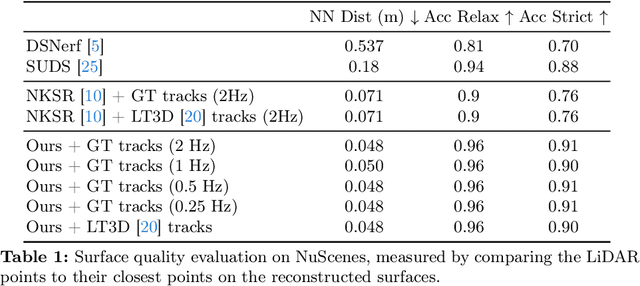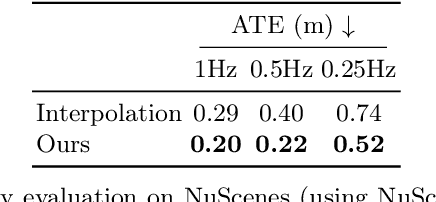Simultaneous Map and Object Reconstruction
Paper and Code
Jun 19, 2024



In this paper, we present a method for dynamic surface reconstruction of large-scale urban scenes from LiDAR. Depth-based reconstructions tend to focus on small-scale objects or large-scale SLAM reconstructions that treat moving objects as outliers. We take a holistic perspective and optimize a compositional model of a dynamic scene that decomposes the world into rigidly moving objects and the background. To achieve this, we take inspiration from recent novel view synthesis methods and pose the reconstruction problem as a global optimization, minimizing the distance between our predicted surface and the input LiDAR scans. We show how this global optimization can be decomposed into registration and surface reconstruction steps, which are handled well by off-the-shelf methods without any re-training. By careful modeling of continuous-time motion, our reconstructions can compensate for the rolling shutter effects of rotating LiDAR sensors. This allows for the first system (to our knowledge) that properly motion compensates LiDAR scans for rigidly-moving objects, complementing widely-used techniques for motion compensation of static scenes. Beyond pursuing dynamic reconstruction as a goal in and of itself, we also show that such a system can be used to auto-label partially annotated sequences and produce ground truth annotation for hard-to-label problems such as depth completion and scene flow.
 Add to Chrome
Add to Chrome Add to Firefox
Add to Firefox Add to Edge
Add to Edge